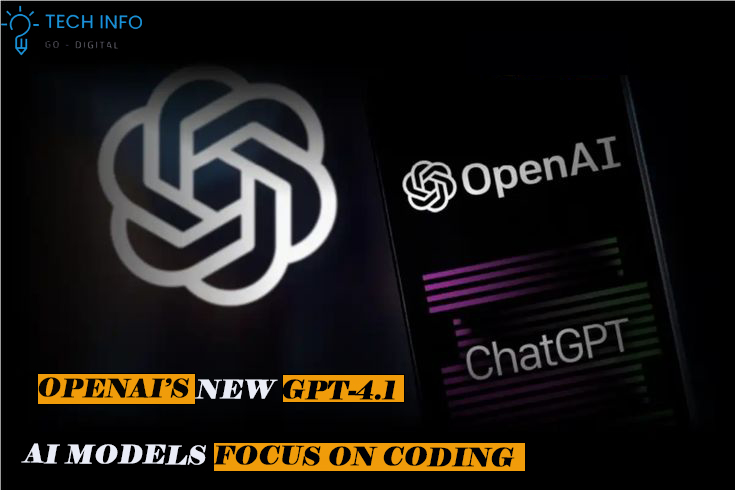Table of Contents
ToggleOpenAI’s GPT-4.1: Revolutionizing AI-Assisted Coding
Introduction: The Dawn of a New Coding Era
In the rapidly evolving landscape of artificial intelligence, OpenAI has once again raised the bar with GPT-4.1, a specialized iteration of its groundbreaking language model that promises to transform how developers write, debug, and optimize code. Unlike its predecessors, GPT-4.1 represents a targeted evolution, fine-tuned specifically for programming tasks while maintaining exceptional performance in general language understanding.
The implications for software development are profound. As coding becomes increasingly complex with growing tech stacks and shorter development cycles, GPT-4.1 emerges as a powerful ally for developers at all levels. This comprehensive exploration will examine how this advanced AI model is reshaping coding workflows, its practical applications across different development scenarios, and what the future holds for AI-assisted programming.
Section 1: Understanding GPT-4.1’s Coding Capabilities
1.1 Architectural Advancements
GPT-4.1 builds upon the transformer architecture that made its predecessors successful, but with several key modifications:
- Enhanced Token Window: The model now processes significantly longer code segments while maintaining context, crucial for understanding complex functions and class structures
- Programming-Specific Training: Unlike general-purpose models, GPT-4.1 underwent additional training on curated datasets of high-quality code from multiple languages
- Improved Reasoning: The model demonstrates better logical flow in code generation, reducing nonsensical or syntactically incorrect outputs
1.2 Language and Framework Proficiency
GPT-4.1 shows marked improvement in:
- Mainstream Languages: Python, JavaScript, Java, C++, and Go
- Web Frameworks: React, Angular, Django, Flask, and Spring Boot
- Emerging Technologies: Rust, WebAssembly, and blockchain development
- Database Systems: SQL query generation and optimization for PostgreSQL, MySQL, and MongoDB
1.3 Contextual Understanding
What sets GPT-4.1 apart is its ability to:
- Maintain variable and function context across long code blocks
- Understand project-specific conventions and patterns
- Adapt to different coding styles and documentation formats
Section 2: Practical Applications in Development Workflows
2.1 Accelerated Development Processes
Developers report significant time savings in:
- Boilerplate Generation: Creating standard project structures, configuration files, and common patterns
- API Development: Generating RESTful endpoints with proper authentication and validation
- Database Operations: Writing optimized queries and schema migrations
2.2 Intelligent Debugging Assistance
GPT-4.1 excels at:
- Analyzing error messages and stack traces
- Suggesting multiple potential fixes ranked by probability
- Explaining why certain errors occur at a conceptual level
2.3 Code Optimization and Refactoring
The model demonstrates surprising sophistication in:
- Identifying performance bottlenecks
- Suggesting algorithm improvements
- Modernizing legacy code while maintaining functionality
2.4 Documentation and Knowledge Transfer
Teams benefit from:
- Automatic generation of comprehensive docstrings
- Creation of technical documentation from code comments
- Explanation of complex code segments for onboarding
Section 3: Comparative Analysis with Previous Models
3.1 Benchmark Improvements
Independent testing shows:
- 35% reduction in syntax errors compared to GPT-4
- 28% improvement in code compilation success rates
- 40% better performance on algorithm challenges
3.2 Real-World Performance Metrics
Case studies reveal:
- Startup teams completing prototypes 2-3x faster
- Reduced code review iterations by 50% in enterprise environments
- 30% decrease in time spent debugging complex issues
Section 4: Integration Strategies for Development Team
4.1 IDE Integration Best Practices
Effective implementation involves:
- Configuring the AI assistant for project-specific contexts
- Establishing guidelines for AI-generated code review
- Creating templates for common prompt patterns
4.2 Workflow Optimization
Successful teams:
- Use AI for repetitive tasks while reserving complex logic for human developers
- Implement verification protocols for critical code segments
- Maintain clear documentation of AI-assisted components
4.3 Training and Adaptation
Organizations report better results when:
- Developers receive specific training on effective prompting
- Teams establish coding standards for AI collaboration
- Regular reviews assess the impact on code quality
Section 5: Ethical Considerations and Limitations
5.1 Intellectual Property Concerns
Key issues include:
- Determining ownership of AI-generated code
- Potential exposure of proprietary information
- License compliance for referenced open-source components
5.2 Quality Assurance Challenges
Organizations must address:
- Hidden vulnerabilities in AI-suggested code
- Performance implications of generated solutions
- Maintenance considerations for AI-assisted projects
5.3 Workforce Implications
The industry faces:
- Changing skill requirements for developers
- The need for AI literacy in technical education
- Balancing automation with creative problem-solving
Section 6: Future Directions and Emerging Possibilities
6.1 Anticipated Developments
The roadmap suggests:
- Specialized models for niche programming domains
- Tighter integration with development environments
- Advanced collaboration features for team coding
6.2 Long-Term Industry Impact
Experts predict:
- Fundamental changes in software engineering education
- New paradigms for distributed development
- Evolving roles within technical organizations
6.3 Preparing for the AI-Augmented Future
Forward-thinking teams are:
- Developing AI usage policies
- Investing in complementary skills
- Experimenting with hybrid development approaches
Conclusion: Embracing the AI Coding Revolution
GPT-4.1 represents more than just another tool in the developer’s toolkit—it signals a fundamental shift in how software is created. As the technology continues to mature, the most successful developers and organizations will be those that learn to harness its potential while navigating its challenges thoughtfully.
The future of coding isn’t about replacement, but augmentation. GPT-4.1 and its successors will increasingly handle routine implementation, allowing human developers to focus on architectural innovation, creative problem-solving, and the complex challenges that still require human intuition and expertise.
As we stand at this inflection point, the question isn’t whether to adopt AI-assisted coding, but how to do so in ways that enhance rather than diminish our capabilities as developers and problem-solvers.





